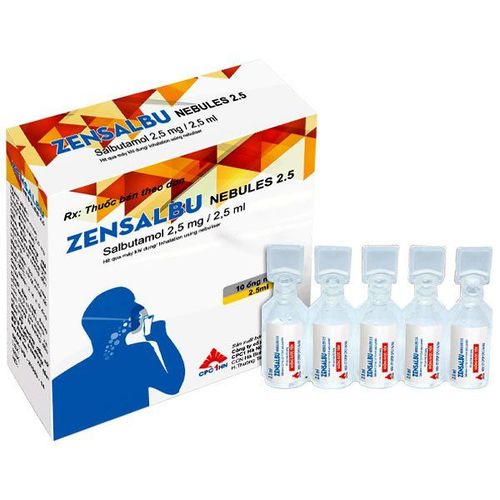This is an automatically translated article.
Calfactant is a surfactant in the lungs, premature babies with respiratory failure due to lack of this substance will be pumped directly into the lungs through an endotracheal tube. So what should the use of Calfactant drug comply with?
1. What is Calfactant?
What is Calfactant? Calfactant is a pulmonary surfactant that helps the lungs function normally. Calfactant when injected into the lungs will have the same task as the natural fluid in the lungs to maintain effective breathing. Calfactant is used primarily to treat or prevent respiratory distress syndrome (RDS) in premature infants whose lungs have not yet fully developed. In addition, Calfactant may also be used for other purposes prescribed by your doctor that are not listed in the manufacturer's instructions for use.
The child will receive Calfactant in the neonatal intensive care unit (NICU for short). While taking Calfactant, the patient will be under constant supervision. To best participate in your child's care while in the NICU, carefully follow all instructions provided by your doctor.
2. Indications of the drug Calfactant
Indications of Calfactant in the following cases:
Prophylaxis in preterm births under 29 weeks of age with high risk of respiratory distress syndrome (RDS); Treatment of infants under 72 hours of age with RDS (diagnosed by clinical symptoms and radiographic findings) and requiring intubation.
3. How to use Calfactant?
Calfactant is delivered directly into the baby's lungs through an endotracheal tube. Your child will receive Calfactant in the neonatal intensive care unit (NICU). The endotracheal tube was connected to a ventilator to help the baby breathe and get the oxygen he needed.
Calfactant should be used as soon as possible (when indicated) after the baby is born, usually within 30 minutes. Calfactant is then usually repeated every 12 hours for a maximum of 3 doses.
The vital signs such as breathing rate, blood pressure, blood oxygen level and other vital symptoms of the pediatric patient will be closely monitored by the doctor during treatment with Calfactant.
The recommended dosage of Calfactant is as follows:
Treatment of respiratory depression (RDS): Children under 72 hours of age: 107.1mg/kg body weight (equivalent to 3ml Calfactant/kg body weight) injected directly into the endotracheal tube every day. 12 hours for a total of up to 3 times; Children 72 hours of age and older: There are no data on the use of Calfactant; Prevention of RDS in preterm infants: gestational age less than 29 weeks: 107.1 mg/kg body weight (equivalent to 3 ml Calfactant/kg body weight) intubated as soon as possible, preferably within 30 minutes of birth born. The dose of Calfactant may be repeated every 12 hours for a maximum of 3 doses; Children 29 weeks of gestation and older: There are no data on the use of Calfactant. Some notes about the dosage of Calfactant :
A rapid and significant increase in the amount of oxygen in the blood and an improvement in lung function often occurs after using Calfactant ; Physicians need to adjust oxygen therapy and ventilator parameters appropriately; Pediatric patients need intensive care and stable control of hypoxemia and/or bradycardia prior to Calfactant prophylaxis; Discontinue Calfactant if the patient develops bradycardia, gastroesophageal reflux into the endotracheal tube, airway obstruction, cyanosis, endotracheal tube dilation or hypoventilation; Aspiration or reintubation may be necessary when the child shows signs of airway obstruction; Calfactant efficacy data are limited to doses of approximately 100 mg phospholipids/kg body weight and up to a total of 4 doses. What to do when you miss a dose of Calfactant :
Calfactant is intubated by medical staff when indicated, so the possibility of missing a dose is very unlikely. Calfactant Overdose and Treatment:
Calfactant is given by a doctor in a controlled medical setting, so there is no chance of an overdose. However, an overdose of Calfactant will not cause life-threatening symptoms, so parents need not worry too much.
4. Calfactant side effects
Calfactant is less likely to cause side effects. Some pediatric patients experience shortness of breath during treatment with Calfactant and these problems may require appropriate management by the treating physician. Pediatric patients are always closely and continuously monitored during treatment with Calfactant.
In summary, Calfactant is a pulmonary surfactant. Calfactant will be prescribed by doctors and medical staff to pump directly into the lungs through an endotracheal tube for premature births with respiratory failure due to lack of this substance.
Please dial HOTLINE for more information or register for an appointment HERE. Download MyVinmec app to make appointments faster and to manage your bookings easily.
Reference source: .drugs.com













